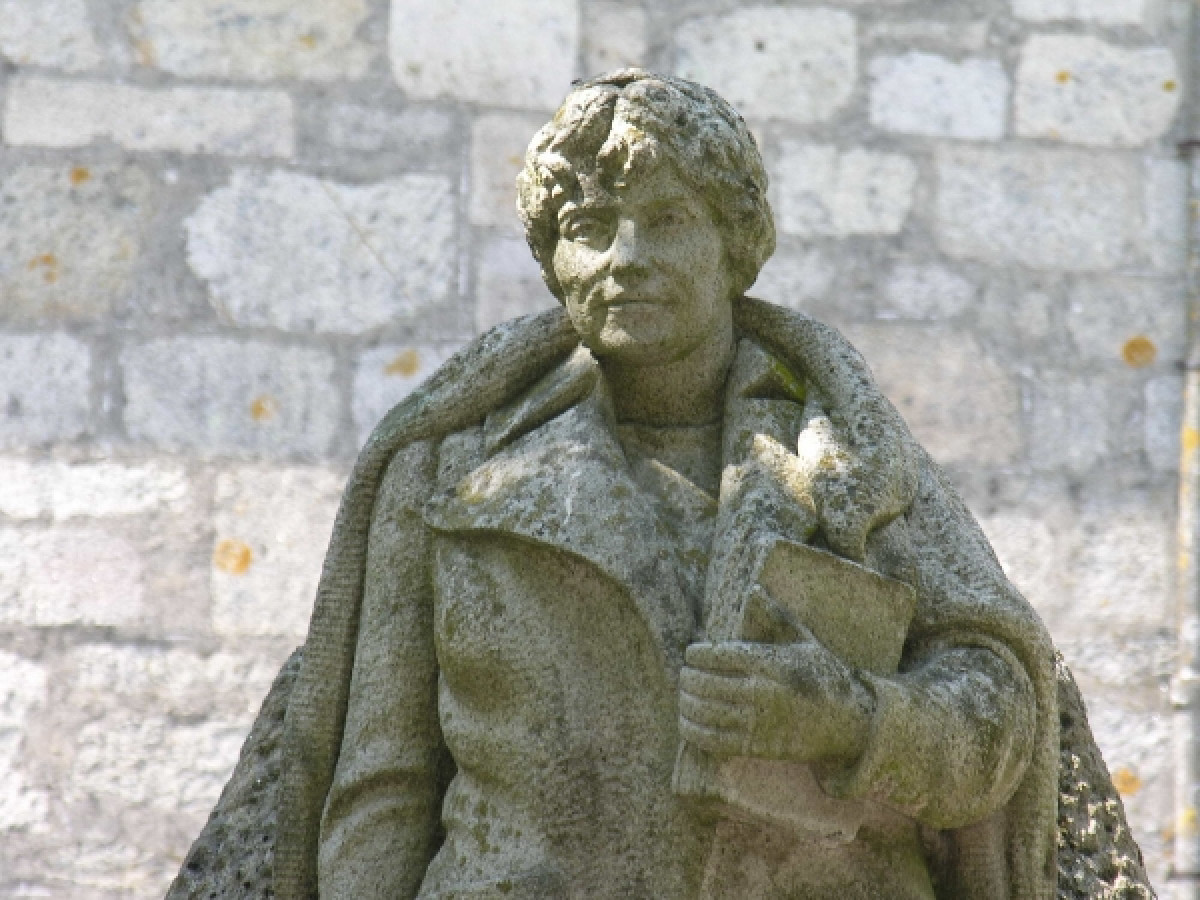
The life of the poet Rosalia de Castro, author of probably the best lyric made in Spain in the nineteenth century, is closely tied to the land in which we live, whre she smiled and suffered melancholy and disappointment. It was on the banks of Sar where Roslaía sprouted lines like this: "How beautiful is your valley, Oh Padron, oh Iria Flavia / But heat, youthful life and sap / that I draw from your heart / like thirsty toddler sweet juice extracted / white and full / of my chest shadowy existence in the bitter / spent stream, which swept the inconstancy blind / vision ermine, a beloved illusion / a sigh of love." where the inner world the poet linked to the landscape of our region, which embodies as part for the whole, the horizon of Galicia. The Hotel Scala group has the honor of being one of the places that influenced the formation of our immortal lyric poet. The Pazo de Arretén is a part of the Rosaliana route, a poetic journey through the lands of Sar-Ulla.

The route takes us from the place where Rosalia de Castro was born in a house that is not preserved and was located on the Camiño Novo, in Santiago de Compostela, to the Pantheon of Illustrious Galicians, in the Galician People Museum, also located in this city.
Between the point of birth and death, we will cross Ortoño, Bastavales, the Pazo de Hermida, Padron, the Pazo de Arretén and Casa da Matanza, where it's placed her House-Museum.
Ortoño: is the place of childhood Rosalia de Castro. She spent the childhood home of her paternal family --her father was the priest Jose Martinez Viojo, so what could not take care-- and acquired his first experiences and impressions. Ortoño place was immortalized in the fourteenth poem entitled Acolá enriba (Up there in English) from Galician Songs.
Bastavales: this important parish of the Archdiocese of Compostela is located in a mythical place for the story of the arrival of the Apostle, here is located the Castro Lupario, where tradition places the court of Queen Lupa. It has a neoclasical church whose bells inspired the famous poem Bastabales Bells, eleventh poem of Galician Songs.
The Pazo de Hermida, located in Lestrove, is linked to the creative activity of Rosalia de Castro and her family life because their children, Ovidio and Gala, were born here. She spent long periods of time here and perhaps because of the spectacular views of the valley of Ulla and Sar-Lestrobe Vega, was inspired to compose some of his most famous poems, such as Chove Miudiño (How rains so fine).
Padrón is another significant places for the poet. Here he lived on Juan Rodriguez Street, walked along the banks of Sar and spent time at the Botanical Garden.

On leaving the village of Padron, if we follow the path of Rosalia teneo to stop at our Pazo de Arretén. This Galician manor house, lovingly restored and open to public tours, was the home of the maternal family of Rosalia de Castro. The parents of Teresa de Castro hoped her granddaughter here and spent some of the most emotional moments of his youth. He dedicated a poem entitled Pazo de Arretén insired in Follas Novas (New Leaves).

Casa da Matanza now houses the House Museum Rosalia de Castro. We reached the highest point of our route. Rosalia de Castro lived here with her husband and his family for the last two years of his life, which was extinguished in 1885. Here we will find editions of his work, family memories, curious objects. On the second floor it reproduces what the house was in the time when the poet lived.
Schedule is as follows museum home
From July to September: 10.00-14.00 hours and 16.00-20.00 hours
Rest of the year: 10.00-13.30 hours and 16.00-19.00 hours
It closed on Mondays.
Sundays and holidays: 10.00-13.30 hours.